Two-wheels works of art and waning fortunes, but help has arrived for the legendary MV Agusta brand
The acquisition of a 25.1 percent stake in MV Agusta by Pierer Mobility AG in November 2022 is exciting news. It’s exciting news for MV’s future and the flow-on effects of the new partnership will be good news for fans on the historic Italian manufacturer. You see, there’s an awful lot of cash and expertise within the Austrian powerhouse, and to ensure the future of MV it needs access to both those things – so the new partnership is set to open all kinds of doors for the Italian brand.
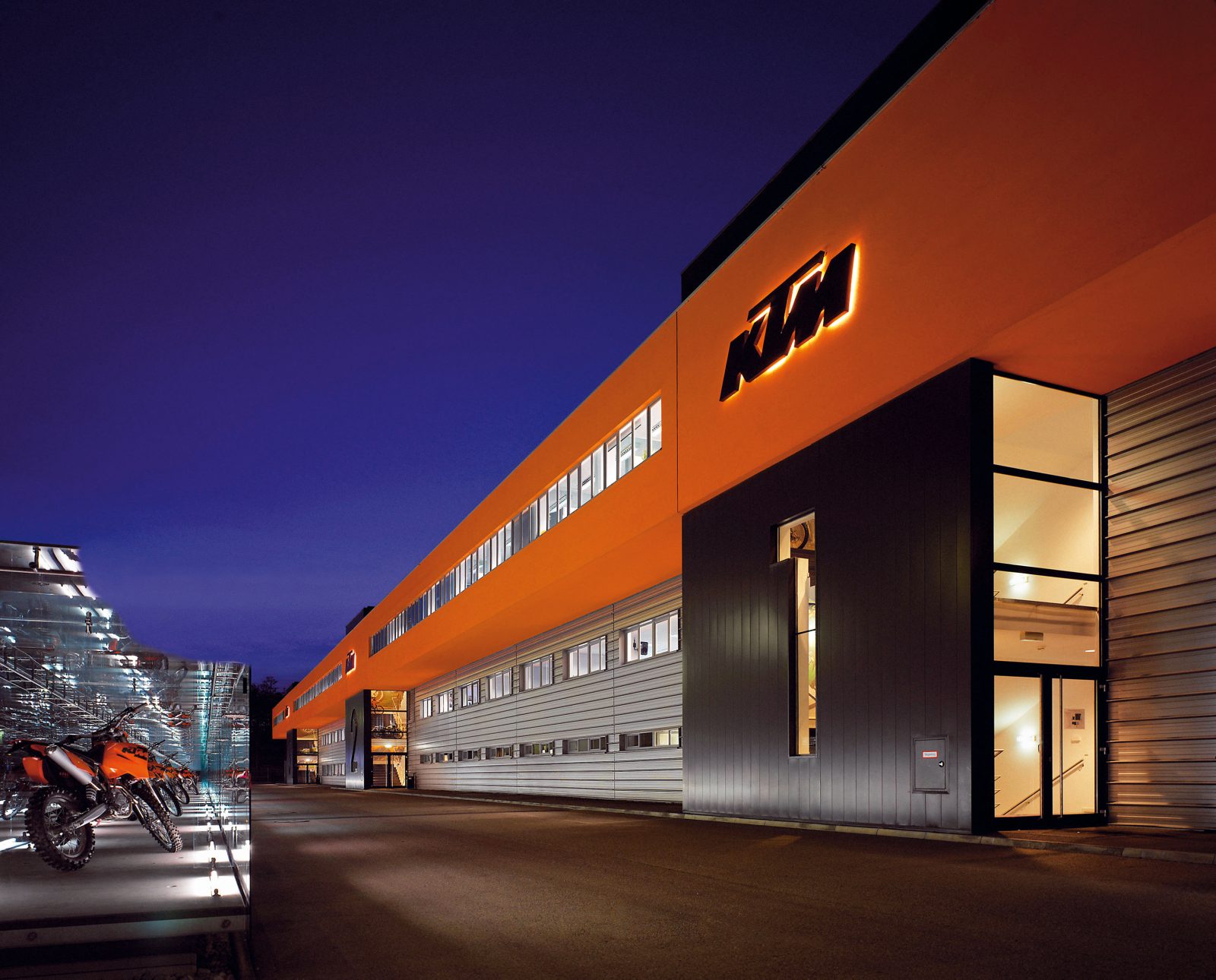
AMCN was invited to Italy as the only Australian media outlet out of just nine non-Italian global motorcycle journalists by MV representatives, Pierer Mobility and KTM group bigwigs to hear about the new partnership. While I was there, I grabbed a tour of MV’s Schiranna production facility, sampled some of the brand’s most delicious bikes and even visited the MV Agusta museum in Casina Costa for good measure. Certainly a once-in-a-lifetime opportunity in what could very well be the most crucial turning point in the history of MV Agusta.
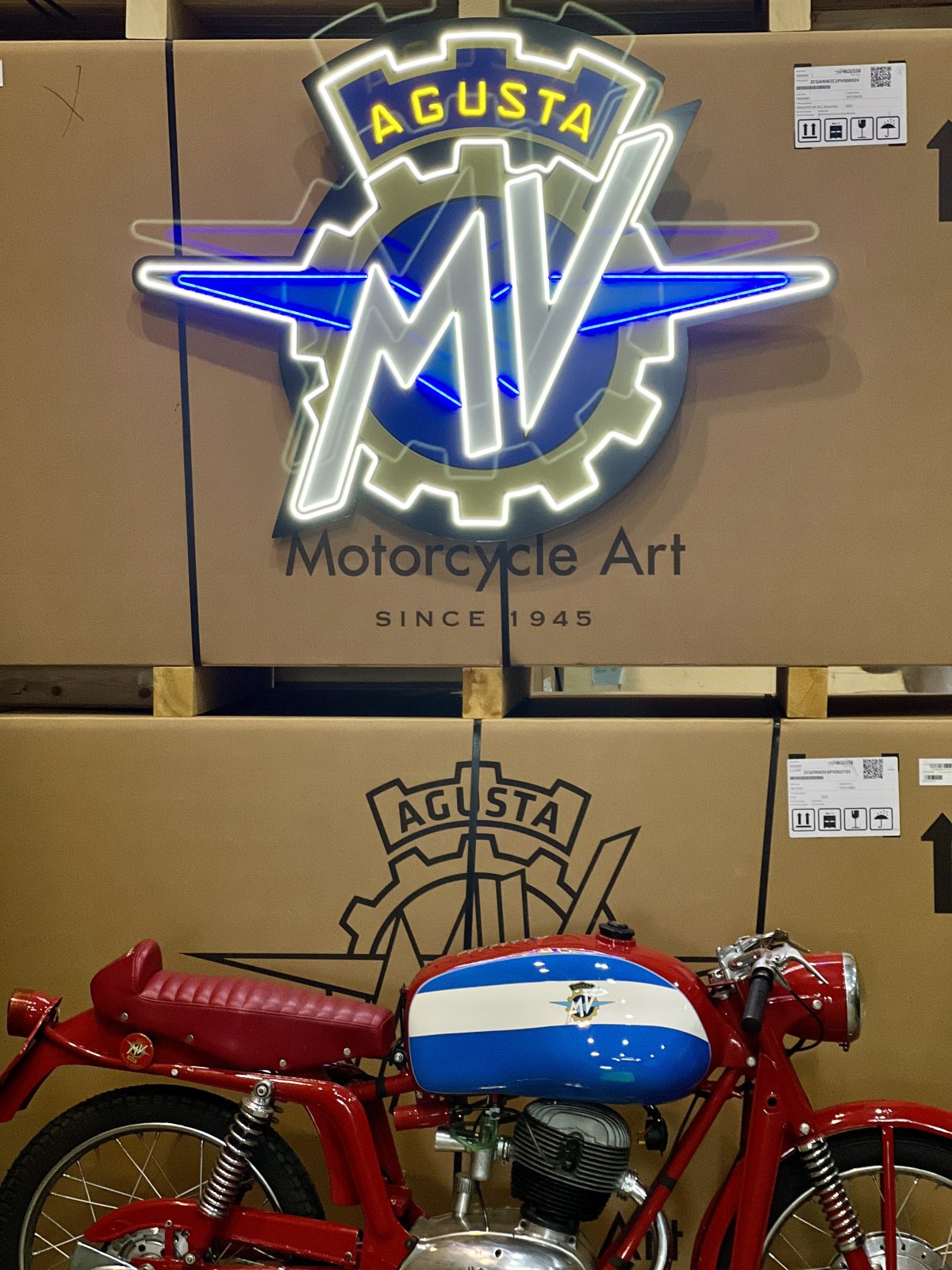
Decade of decline
There’s no doubt MV Agusta makes highly desirable motorcycles; in fact they are some of loveliest looking two-wheel vehicles on the planet. But it’s a fringe product, with the brand’s aura and history often more on the radar of riders than the actual motorcycles themselves – certainly here in Australia anyway. But that has nothing to do with the current distributor Urban Moto Imports’ marketing efforts: it’s more an issue with a company that has suffered from a lack of direction, not helped by the revolving door of ownership resulting in repeated failed attempts at producing some sort of economically viabilty.

The limited-edition Brutale 1000 RR Rush
In 2014, Mercedes AMG acquired a share of the fledgling company until in 2017 when its share was purchased by ComSar Invest, headed by MV Agusta’s current CEO Timur Sardarov. Over the next two years, ComSar continued to acquire MV shares until 2019 when the company acquired full ownership and Sardarov became CEO.
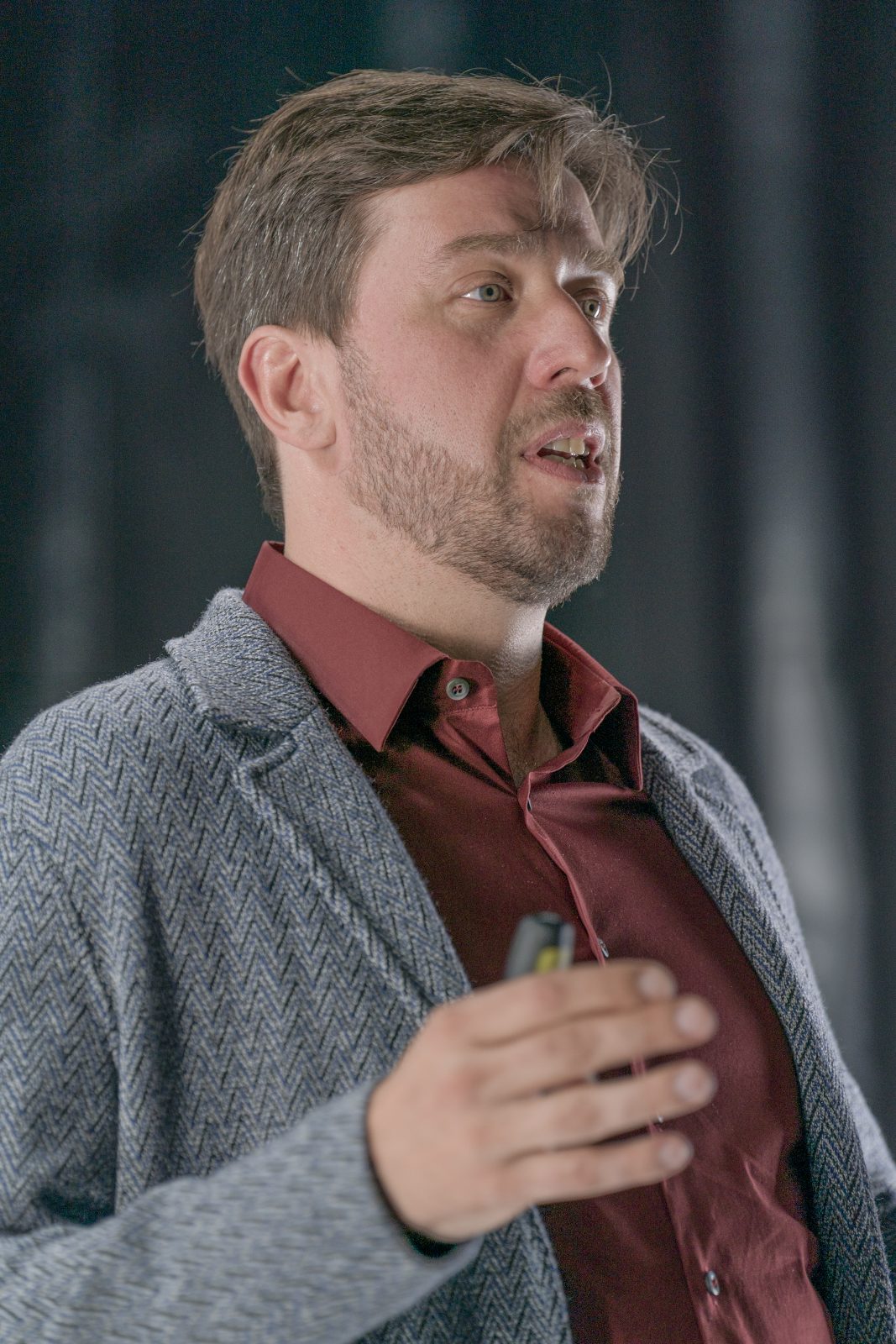
MV majority owner and CEO, Timur Sadarov
What Sardarov discovered was a company that, at the ground level, suffered supply chain issues and was hampered by disjuncts between development and the bean counters, which resulted in a brand which genuinely lacked direction. The only stable aspects of the company was the drive to build two-wheel pieces of rolling art and do it with the passion that permeates MV’s historic Italian manufacturing facility.

Fresh out of the box, and ready for PV to ride!
“This company never made business since 1945,” Sardarov told AMCN. “The company when I joined was dead and not just dead economically: it was dead in terms of technology, it was dead in terms of design, it was dead in terms of philosophy. Nothing made sense here, the problems of this company started from the drawing board, and this design that you love and admire made no economic sense”.
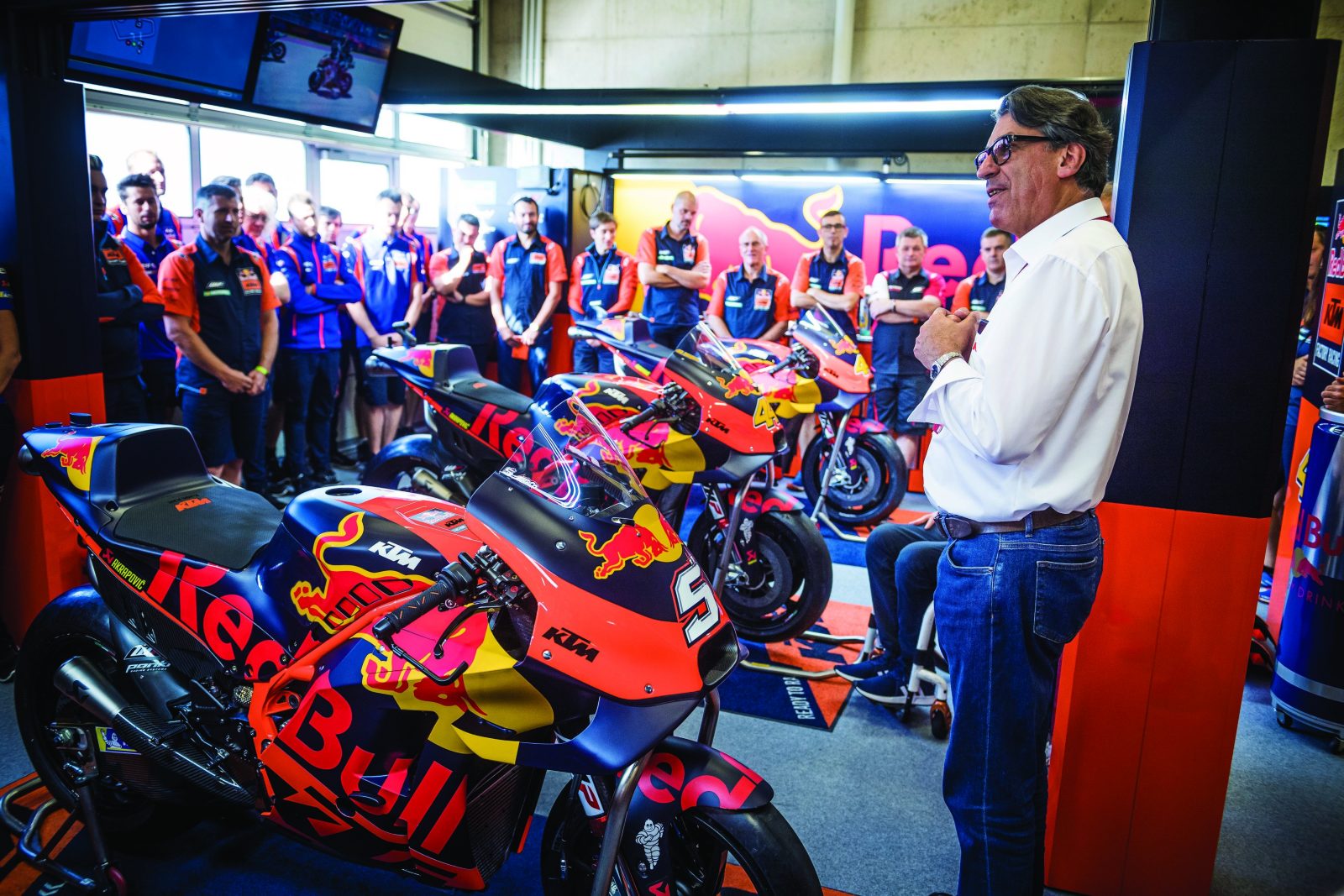
KTM owner Stefan Pierer at the 2019 Austrian MotoGP round
Unfortunately, as Saradarov now acutely understands, gorgeous motorcycles and passion alone aren’t enough to build a viable and profitable business. And to paraphrase Sardarov, before Pierer Mobility arrived and purchased a 25.1 percent share in MV, the company was on the bones of its arse.

Rich MV racing pedigree: the old and new
Sparring partners
The new partnership will see the KTM group take control of the back-end running of the company and use its expertise and financial clout to turn MV Agusta around.
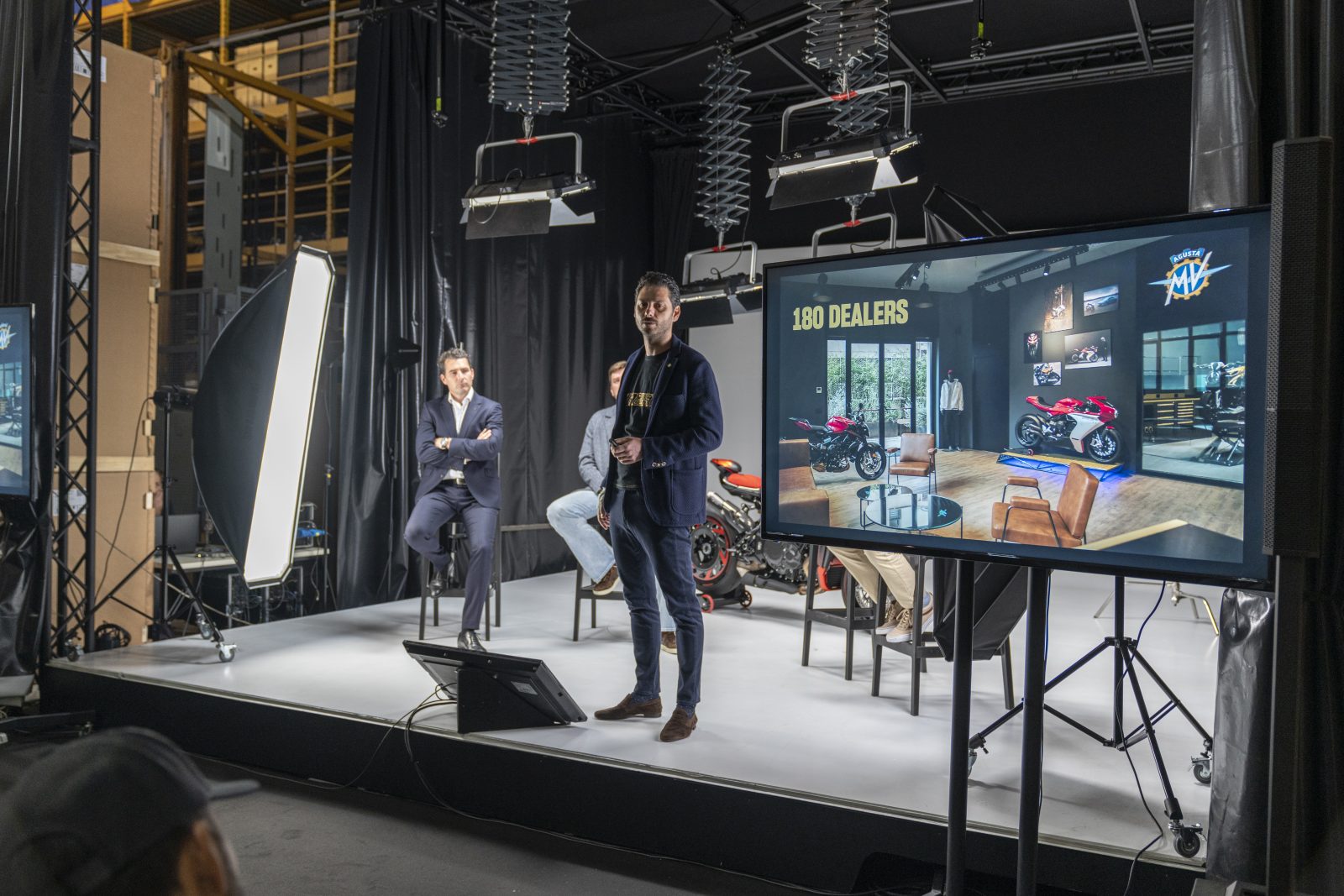
MV management provides the lowdown on the way forward
The partnership will bring stability to the brand. As well as overseeing production, the Austrian brand will take over distribution of product through KTM’s global dealer network (from September in Oz), will look after marketing, technical training and, importantly, parts supply with many of KTM’s suppliers able to produce parts for MV models in a more consistent way.

The KTM group, which includes Husqvarna and GasGas, has gone from strength to strength in the last two decades. The group sold more than two billion euros worth of motorcycles globally in 2022 alone, so to say it has a handle on how to get the job done is an understatement. In fact, the KTM group is now Europe’s largest motorcycle manufacturer and sells more motorcycles globally than Ducati and Triumph combined through its network of over 4400 dealers. It’s the relationship with its dealer network that KTM group sees as one of the greatest assets it can bring to the new partnership.

So, what of future influence over MV product by the KTM group? Well, the official line is that the group is simply there to handle the back-end chores of putting business, production and distribution procedures in place. That, it says, will instil confidence in the motorcycle-buying public which should ultimately assist in turning MV Agusta into a profitable business.
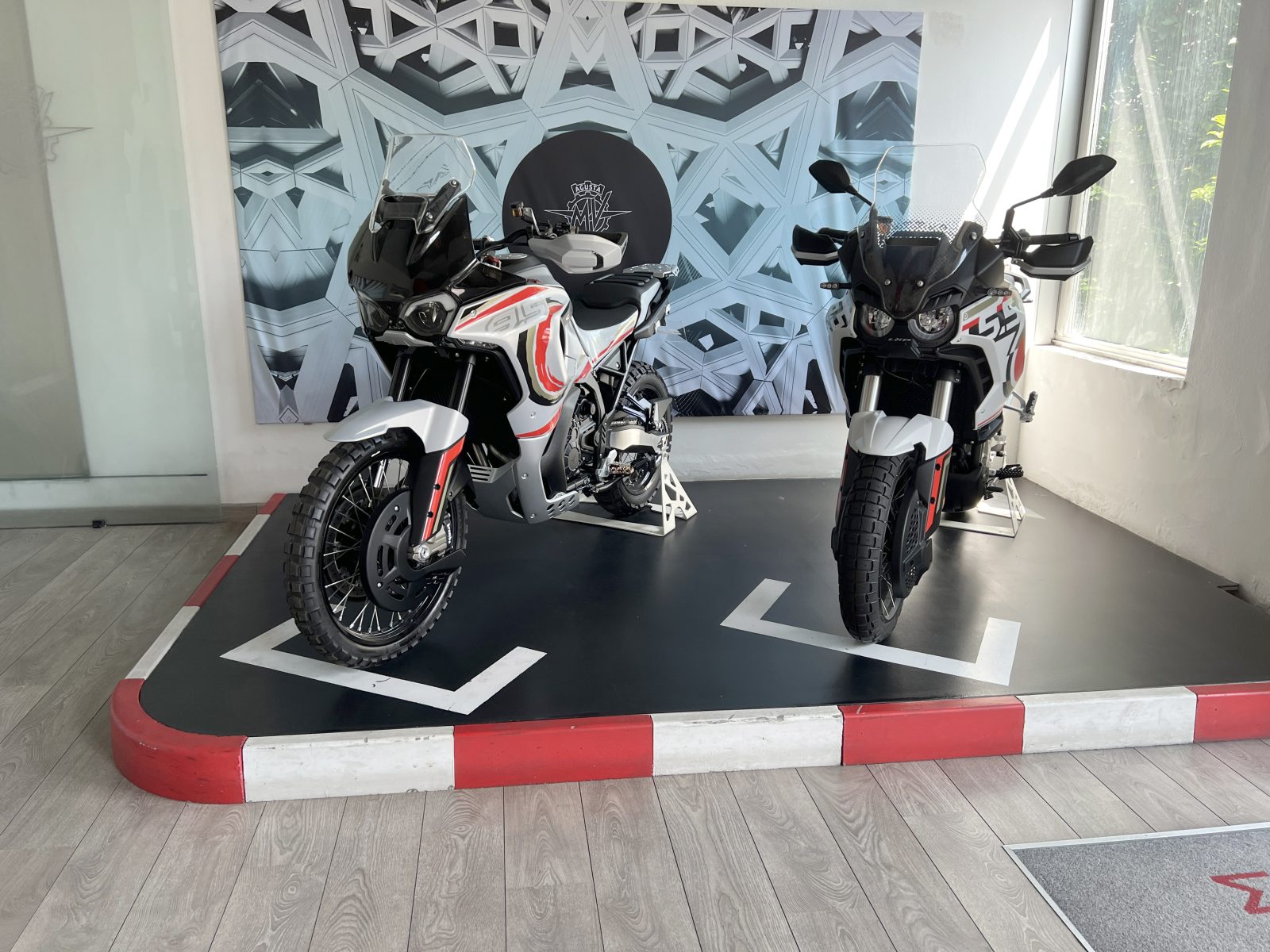
The new MV Agusta Lucky Explorer adventure bikes
And does that mean we’ll be see a bunch of KTMs with MV badges on them in the future? Apparently not, I was told that if the KTM group’s R&D departments could be of use in developing better products, then they would make it so, but they stopped short of stating that it would be designing MVs from the ground up. Indeed, according to Pierer Mobility AG CSO and board member Florian Kecht, the acquisition of MV Agusta allows the KTM group to offer a product that’s different to what it currently offers. The group has a passion for the MV brand, from the bikes it builds to the history of the company, so “there’ll be no copying and pasting what KTM do in Austria”, Ketch said.
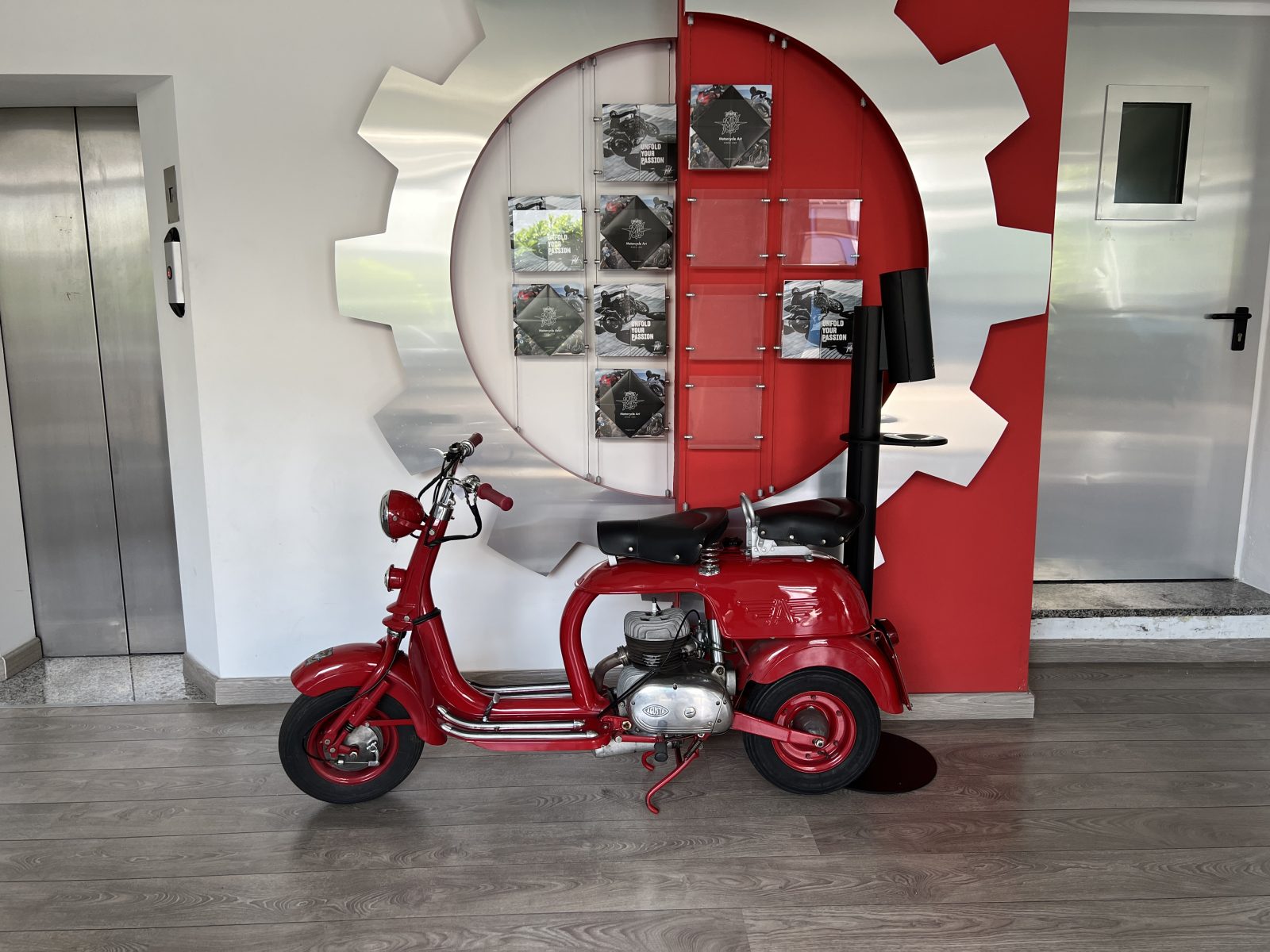
History galore – and that’s just at the company headquarters, let alone the museum
Despite what that sounds like, the top brass made a point of saying that at this stage there is no intention for Pierer Mobility to take a larger stake in MV. I was told the group understands the unique place MV holds in the market as a premium boutique brand and there are absolutely no plans to mess with that. The plan is simply to do what MV already does, just better. It’s acutely aware of the history and passion of the brand and is adamant that must remain.
“We want to be the number one power two-wheeled brand in the motorcycle industry,” added Ketch, “without diluting the MV brand.”
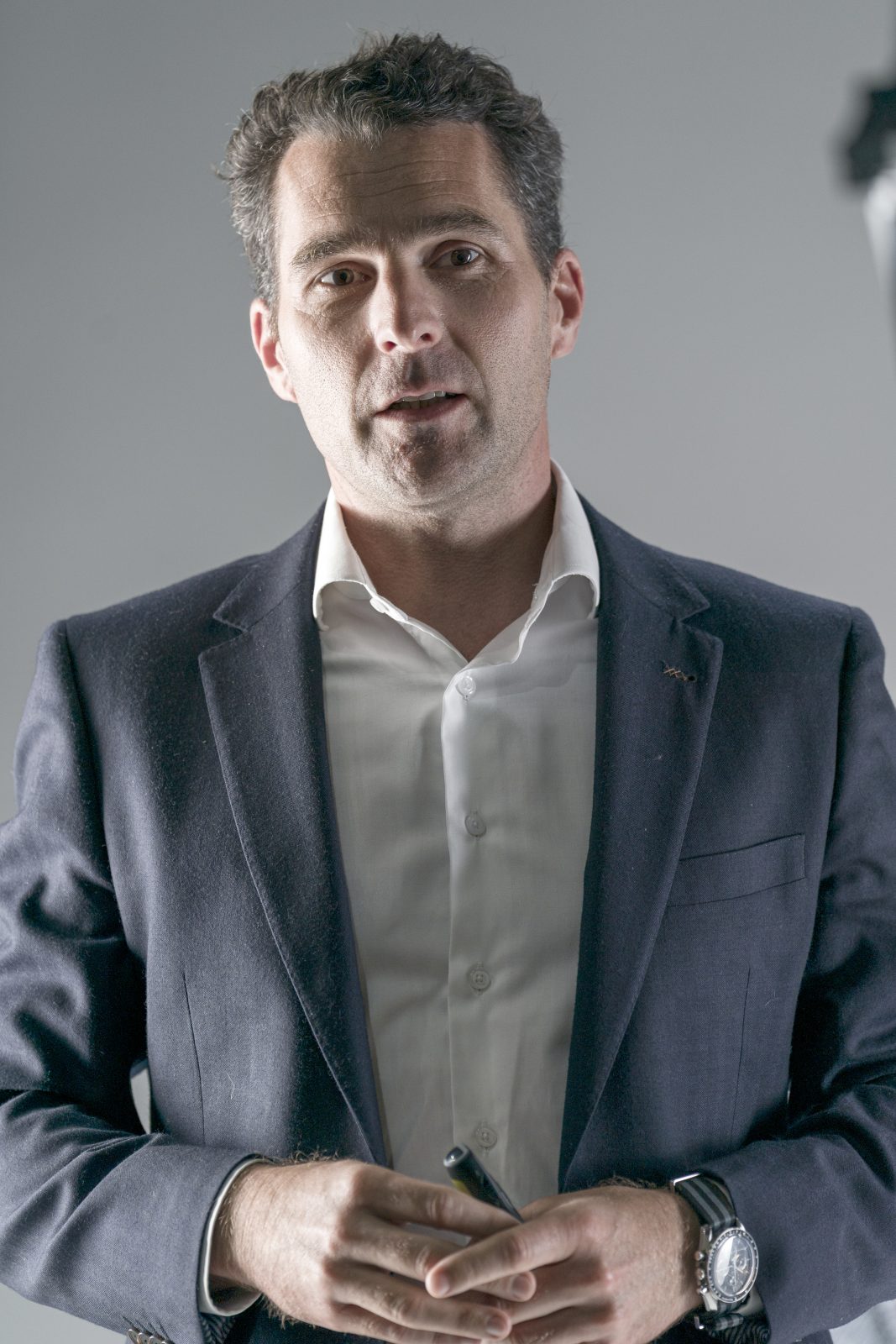
Big wig: Pierer Mobility’s chief strategist and board member, Florian Kecht
Soul and sales
To retain the soul, there are no plans to build MVs anywhere other than in the company’s historic manufacturing facility in Italy. And indeed with MV now awash with KTM cash, the current production line is being expanded and improved, with plans firmly underway to refurbish and improve the complete facility in the future, which should allow the brand to produce around 15,000 motorcycles a year. So, while there is a clear focus on increasing production, and ultimately motorcycle sales, neither MV or the KTM group are either focused on nor interested in flooding the market and clearly want MV Agusta to remain an exclusive, luxury brand.

The cogs of the partnership are already well underway and kicked off before the global agreement was signed. As early as September last year, an agreement was in place for the KTM group to handle the distribution of MV product in North America (don’t forget Urban Moto Imports was the official distributor in North America as recently as March 2020).

Who knew?
The 10-month partnership headstart has already seen the creation of a new and improved dealer network, while KTM procedures have also been implemented to streamline and improve
the distribution process.
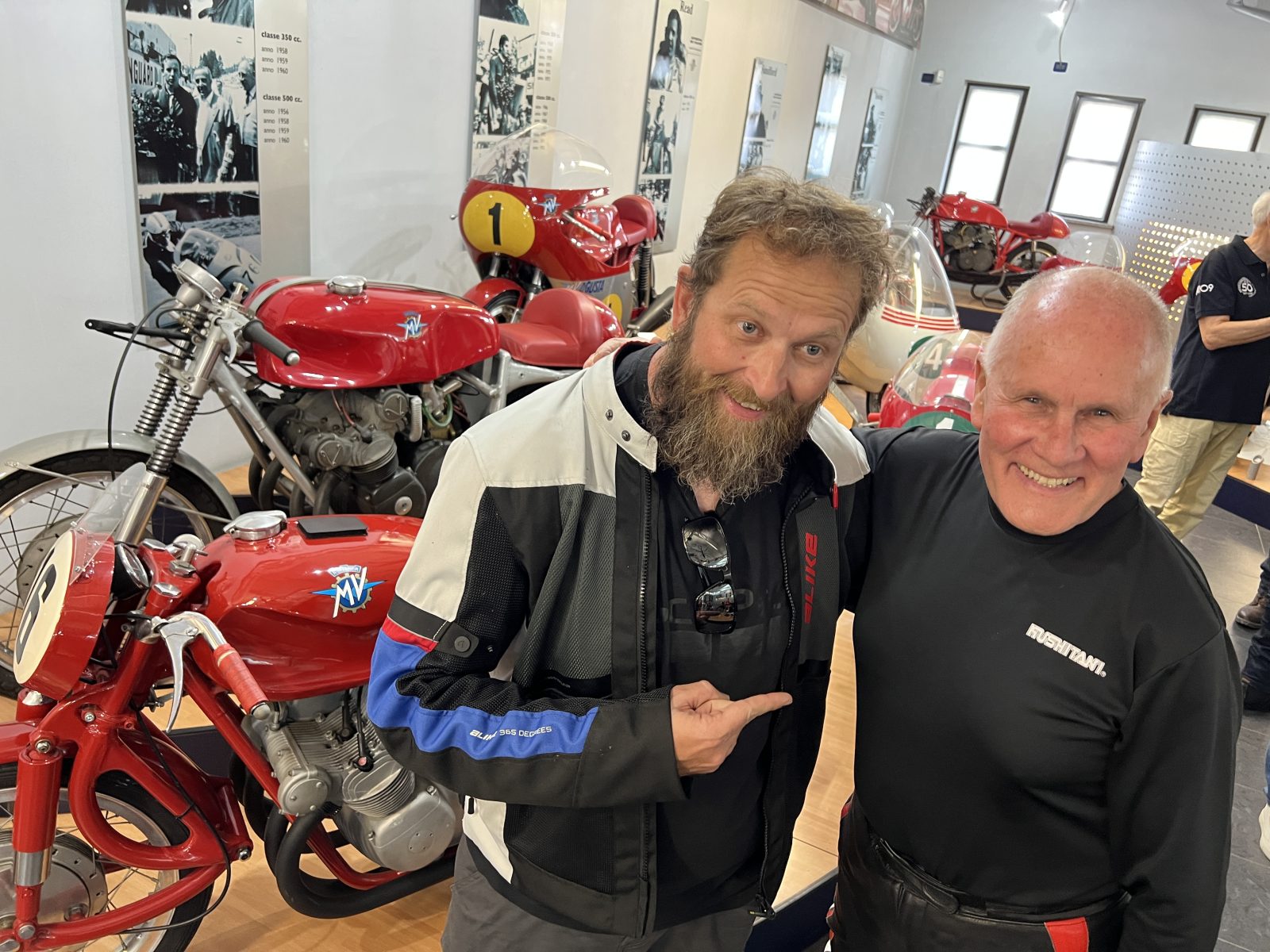
PV ran into a shady looking fella in Italy…
The North American market is the biggest single market for the KTM group with over one billion euros worth of revenue coming out of that market. KTM sees massive growth potential for the brand in the US, and it makes sense to get rolling there with such a well-established footprint in place. The transition in Europe has also started, with around 80 dealers expected to be onboard by the end of this month with the network expanding over coming years.
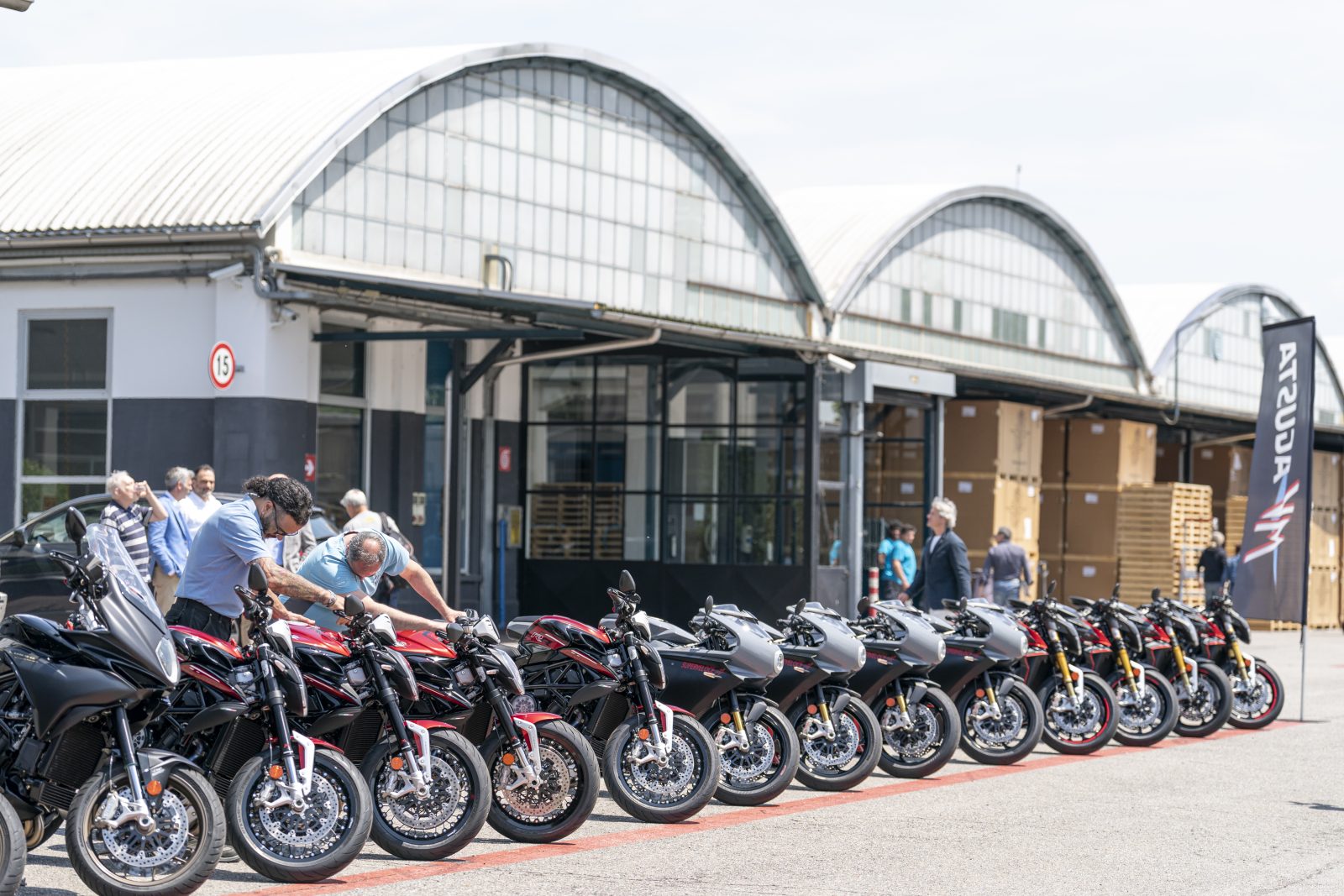
Time for some action, but which one first?
As mentioned, back here on Australian shores, KTM Australia will assume distribution of MV product from Urban Moto Imports in September. In total, MV is looking to appoint 180 new dealers globally by the end of the year.
Like most brands, MV also has its eyes on the Asian market and sees this as an area where massive gains can be made. In China, KTM group product is distributed by CFMoto, so MV already has a solid base from which to start the push into the lucrative Chinese market.

You can’t get more signature than KTM’s orange trellis frame
Model dealer
The handover process from the current crop of global distributors to the KTM group includes the rebuilding of the global dealer network. To emphasise and grow the brand’s luxury product reputation, strict requirements need to be met to become a future MV dealership with a huge emphasis on all aspects of customer experience – think walking into a Ferrari showroom, Rolex store or Gucci emporium.

The KTM group lists its relationship with its dealers as a key asset it can bring to the partnership, and the group’s growth is evidence of that. It understands that to get the best from its dealers, and in return capitalise on sales of MV Agustas, it needs to provide them with a business model that is solid and allows them to run a profitable business.

There’s a clear vision for how MV should be perceived, and dealers will need to be on board with this. So much so that it means some dealers won’t be MV Agusta dealers after September, and new ones will come into the fray.
It sounds harsh, but it’s completely understandable. Nobody wants to see MV Agusta lost to the sands of time, as it’s a brand with so much history, so much passion behind it, and it would be an absolute tragedy to see it die. But, as Timur Sardarov was forthcoming in pointing out, prior to KTM coming to the party that was the reality of the situation.

Fresh off the production line
The future is bright
MV Agusta and Pierer are under no illusions that the transition won’t be hard work, and that there will be bumps along the way, but they are committed to starting fresh and giving the legendary nameplate the infrastructure it needs to become a profitable and flourishing luxury motorcycle brand.

Timur Sadarov is excited about MV’s future now that he’s brokered the deal with KTM
The partnership has also seen a push to refine the product. In recent times, MV Agustas have been built with an uncompromising approach to the design and performance of the product. But a motorcycle’s stunning looks and bulging list of specs doesn’t necessarily equate to a great bike. It’s why for quite a few years now, some MV motorcycles could be described as a classic case of form over function.

One of Sardarov’s goals since becoming CEO has been to refine the product. His and Pierer Mobility’s shared vision is to produce a product that is both visually appealing and with flawless performance. Both form and function.
And it’s clear the fruits of this new ethos can already be seen in the 2023 model range, which you can read about next issue in my ride reviews of the Brutale 1000 RR, Dragster 800 RR SCS, Superveloce 800 and Turismo Veloce Lusso SCS.
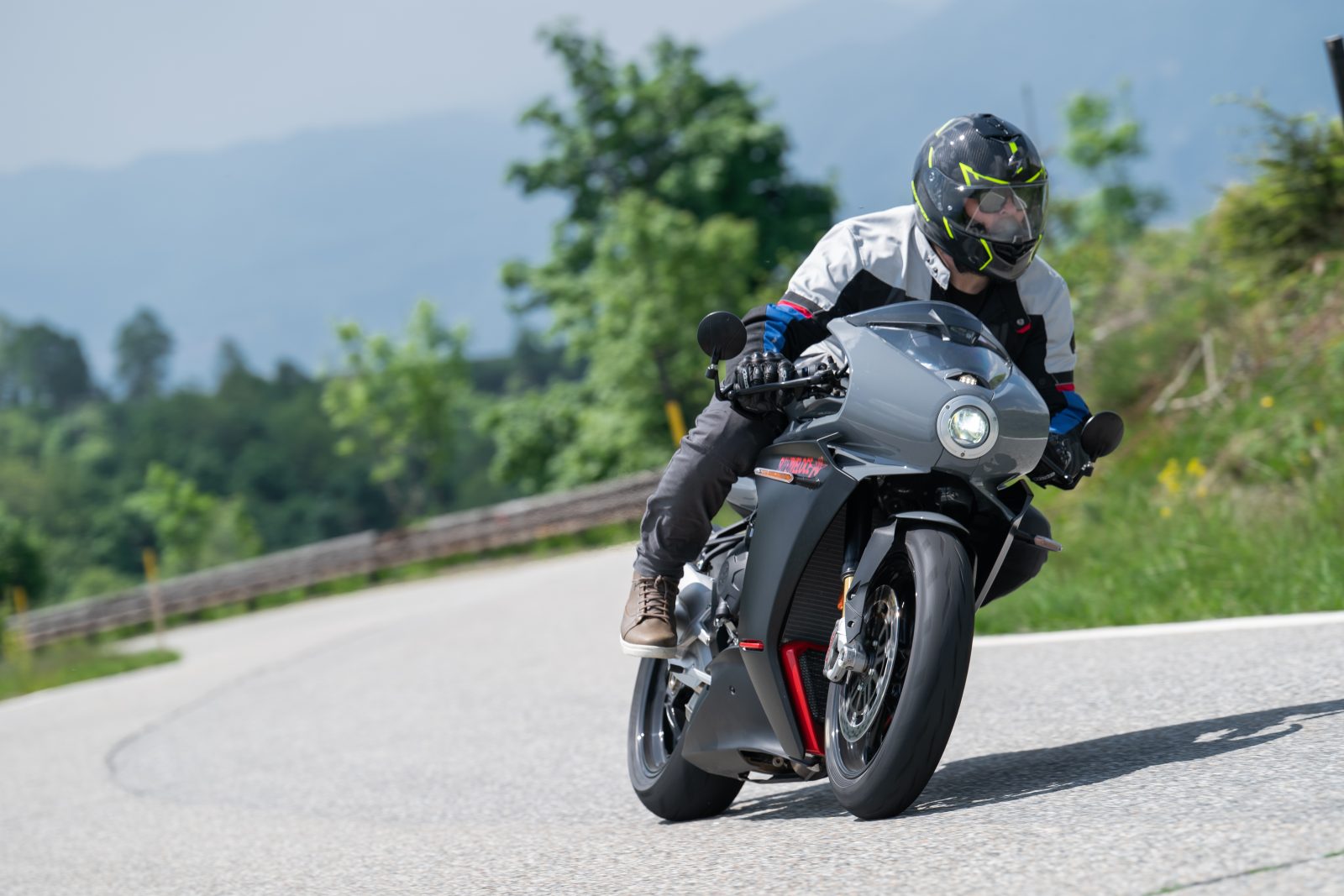
It’s a very exciting time for this historical brand, and from the buzz around the MV factory and the enthusiasm flowing from all the MV Agusta and Pierer Mobility top brass I spoke with, they feel exactly the same way. With Pierer Mobility’s capital and back-end knowhow in combination with the passion and craftsmanship of MV Agusta, I can’t help but think this is the best chance MV Agusta has ever had to become a sustainable, profitable and healthy business that will allow bike lovers to enjoy even higher quality motorcycles for many years to come. I can’t wait to see what happens.

PV, caught up in his own flying MV bubble!
Beauty and the beast
The might the KTM group can bring to bear on its new partnership with MV Agusta shouldn’t be underestimated PIERER MOBILITY AG is far more than the parent company of KTM, Husqvarna and GasGas. As well as owning WP suspension, it sits at the top of a conglomerate of companies that also plays in the bicycle market, as well as design, concept development and digitisation space.
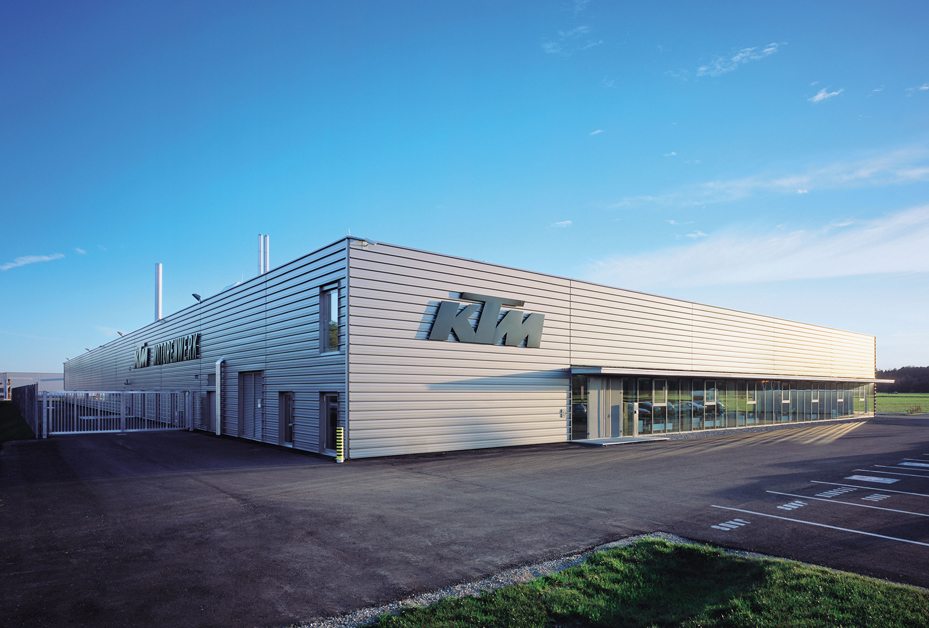
Globally, the company has five motorcycle production facilities. The main facility in Austria produces around 220,000 units a year. The company’s partnership with Baja sees around 160,000 motorcycles produced in India, while a joint facility with CFMoto produces 20,000 units in China. Around 5000 GasGas trials bikes are built in Spain and, if production estimates are realised, another 15,000 MV Agustas will be hitting the market from the facility in Schiranna.
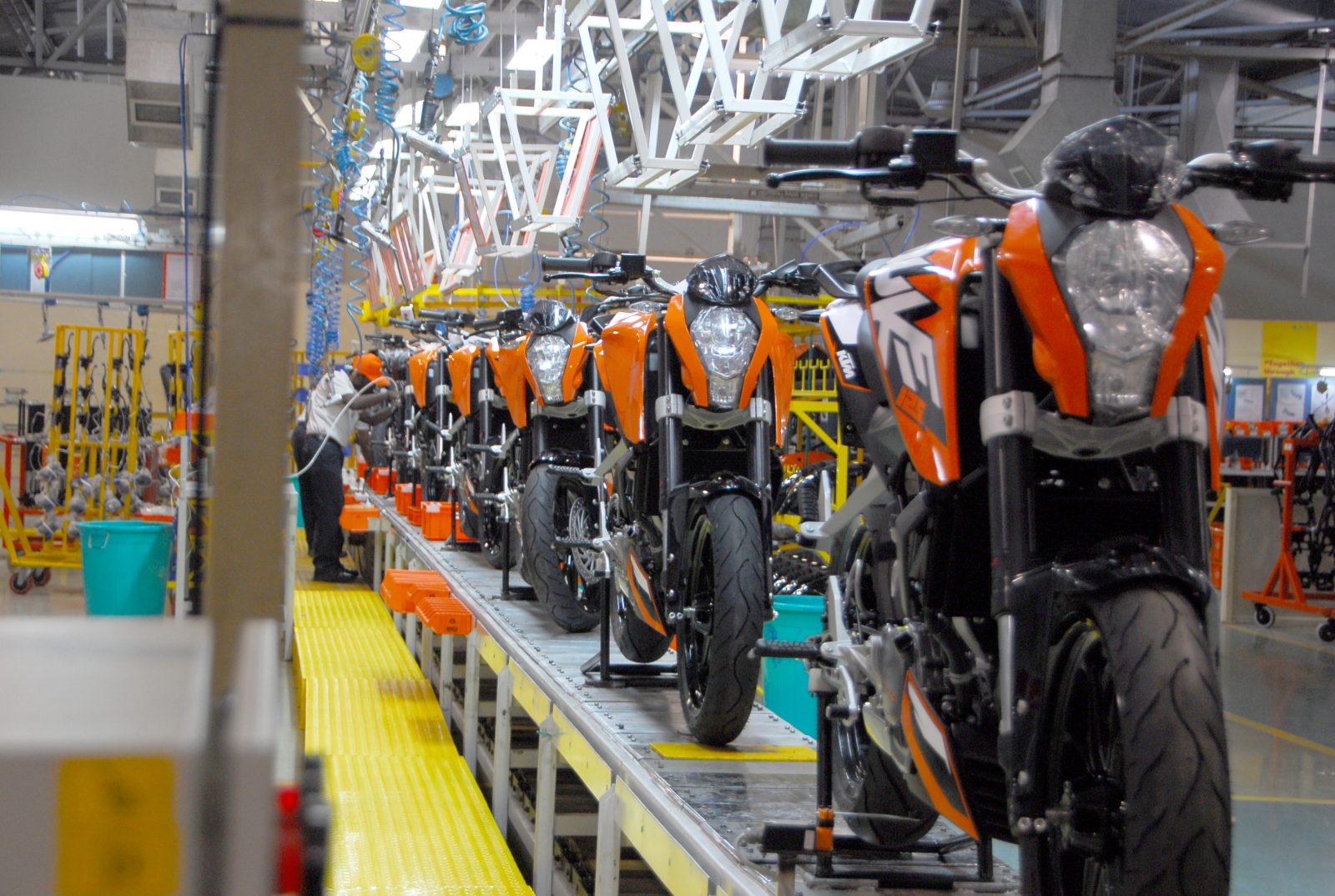
KTMs roll off the production line in India
Add to those six other non-motorcycle production facilities in Bulgaria, Taiwan, Colombia, Brazil, Argentina and the Philippines and you start to get an idea of the clout of the company MV has just climbed into bed with.

CFMoto and KTM already enjoy a technical and operational partnership, which includes a joint factory in China
Pierer Mobility cites four pillars that have allowed the company to enjoy the success it has over the last few decades: its brands, its innovation realised through racing, its globalisation and its strong dealer network, which currently sits at 4480 worldwide.
As these are all elements MV Agusta has lacked so outwardly at least, the partnership looks like a perfect fit.

A long-time motorcycle visionary and shrewd businessman: Stefan Pierer
TEST: PETE VORST PHOTOGRAPHY MATTIA NEGRINI, AMCN ARCHIVE & PV